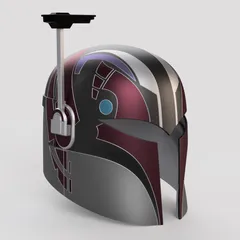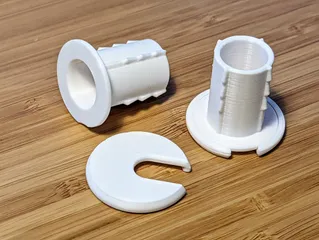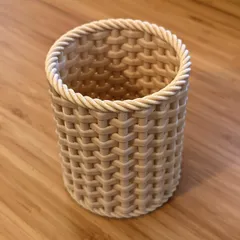Silica Desiccant Container (fits inside spool)
Description
PDFWhy should I use this desiccant container?
- It's sized to fit into any spool from .5kg and up.
- It uses much less desiccant while also maximizing the water absorbing surface area.
- The desiccant can be rapidly dried in a microwave, dehydrator, etc. without removing it from the container.
- The infill screens print much faster than containers with modelled in screens, while also providing much better airflow and containing the smallest sized desiccant beads.
- You get a visual humidity indicator if you use color changing desiccant and print the containers in transparent/natural PLA.
My preferred long term filament storage method with these containers is to fill them up with color changing desiccant that I buy in quantity, and then vacuum seal the filament and desiccant in a sous vide bag (as shown here).

I've uploaded the STLs and a step file, but you should print from desiccant_container.3mf, because the screen portions rely on specific infill settings. The default layer height in the file is 0.3mm with a 0.2mm height modifier for the threads; you could print a bit faster by running the whole thing at 0.3mm, but it tends to produce very rough threads.
The 3MF has eight containers, which will fit the bed of a Prusa MK3 or a Creality Ender 3, but you can just as easily reduce or increase that depending on your need and bed size. I print these in translucent/natural PLA. I wouldn't advise using another filament, because the open infill of the screens gets droopy with filaments that don't bridge as well.
I dry out the desiccant by just throwing the full containers as-is into my microwave or dehydrator. After a few drying cycles the PLA seems to naturally anneal, making it capable of withstanding even higher temperatures.
Version 2 Update
- Added knurling on the lid to make it easier to tighten and remove.
- Increased thread length, depth and added more tolerance, which makes the threads more durable and easier to print.
- Thinned out the ribs on the screens and reduced screen infill to 30%.
Tags
Model origin
The author marked this model as their own original creation.




